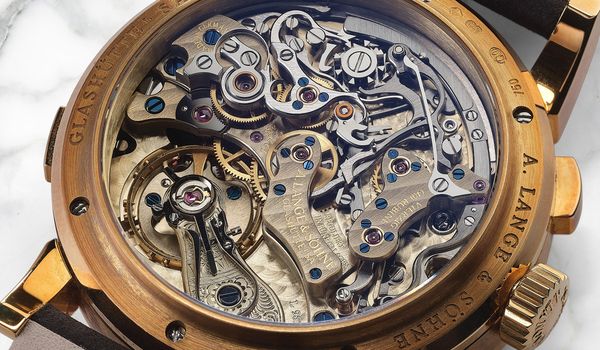As we collectively transitioned into the new millennium, George Daniels was assembling his first serial production watch containing the co-axial escapement, that he had fought so hard for the industry to recognise its superiority to the lever, eventually leading to the Swatch Group’s adopting it for scale production. The project to produce the Millennium wristwatch would also provide excellent training for a certain Roger Smith, who has gone on to evolve the co-axial in his own way, through further development.
Daniels is viewed by many as the father of modern independent watchmaking, providing a viable model for the enterprise, publishing what has become the bible for those looking to produce a watch from start to finish, and even establishing an educational trust from the proceeds of his estate; it seems extremely appropriate that the twilight years of his career were to be the starting point for another like-minded watchmaker. François-Paul Journe has often referenced Daniels as an inspiration, even presenting him with a watch and writing a heartfelt dedication following his passing. 2000 would signal the launch of Journe’s namesake brand with the arrival of the Resonance and Tourbillon models, and would be the beginning of the path to great success for the man and his company.
Like Journe, Philippe Dufour had done significant work for other brands (both had developed sonneries for watches that did not bear their name) before establishing his workshop, and the year 2000 would witness the arrival of a watch that came to define the legacy of Le Sentier residents. Saying that the Simplicity is a time-only watch is akin to saying that Michelangelo’s David is a marble sculpture; for many collectors, the least complicated Dufour (when compared to his landmark Grande Sonnerie and innovative Duality) has become an absolute grail and a synonym for a virtually perfect execution of a wristwatch.
There were a few key independent watchmakers toiling away at their workbenches during these years, but at the same time there were a few names from the AHCI who had grander ambitions. 2000 to 2005 saw the expansion of brands such as Franck Muller and Roger Dubuis from small artisanal workshops into sizeable brands encompassing in-house production facilities and sophisticated marketing teams, fuelled by external investment and new partners.
Roger Dubuis would eventually be sold to Richemont at the tail end of group expansion, that also defined this period, with Johann Rupert’s group adding A. Lange & Söhne, IWC, and Jaeger-LeCoultre to their portfolio in 2000, having already secure the outstanding shares the Vendôme Group comprised of Cartier, Montblanc, Piaget, Baume & Mercier and Vacheron Constantin, among others, in the later part of the 1990s. In late 1999, LVMH would acquire Zenith and TAG Heuer, providing the foundation for their watch holdings that would grow through the next 20 years.
A transitional period for the watch industry as a whole, these five years at the start of the new millennium would prove to be extremely influential for the business of horology.

